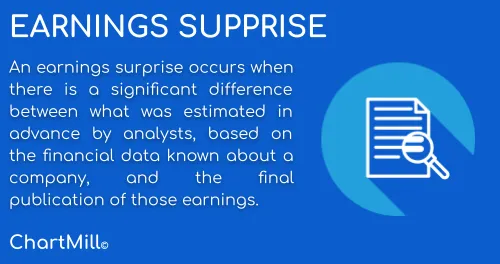Earnings Surprise Explained
By Kristoff De Turck - reviewed by Aldwin Keppens
Last update: Apr 19, 2024
What is Earnings Surprise?
An earnings surprise is a deviation from reported operating results, a significant difference between what was estimated in advance by analysts based on the financial data known about a company and the final publication of those figures.
The forecast must be as accurate as possible so that the reliability of the estimates is sufficiently qualitative. For this purpose, the company is studied in detail with a lot of attention being paid to the financial figures.
One of those assumptions that analysts try to make relates to the earnings per share for the upcoming quarter or year that the company will announce in the future. Earnings per share is a company's net profit divided by its outstanding common stock.
That figure is an important metric because it provides insight into what a company earns per issued share.
Analyst preliminary estimates are initially looked at as a whole to arrive at an overall valuation and expectation. When the company finally publishes its quarterly or annual results, they are compared to the previously made estimates.
If the reported earnings of a company are noticeably higher than what was expected by analysts, this is called a positive earnings surprise. If the profit is lower than the estimate, it is called a negative earnings surprise.
Why is this important to investors?
Such earnings surprises will almost always translate immediately into a corresponding and sudden price reaction with increased volatility. Thus, it not only has an effect on the stock price but the earnings surprise also plays a role in the trading activity itself. Moreover, positive and negative earnings surprises will also affect the future valuation of the company in question.
Earnings Surprise example
Check out the stock of the company ARCH CAPITAL GROUP LTD (Nasdaq:ACGL).
Its Q3 results were published on October 26, 2022 after the market closed. The company reported earnings per share of 0.28 while analyst consensus was barely 0.17. A difference of $0.11 and an earnings surprise of more than 62%. The results surprised positively, earnings were much higher than what was expected beforehand.
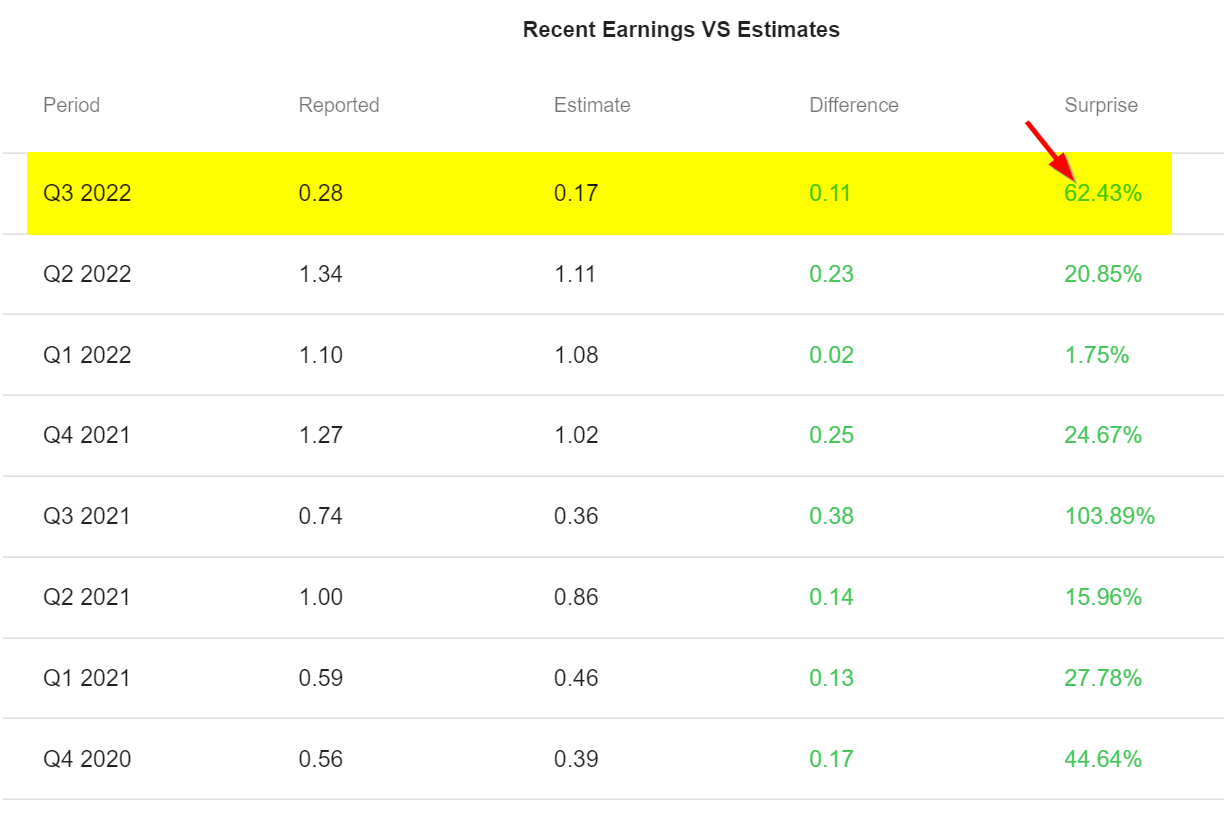
Because the quarterly results were not announced until after-hours, it was mainly a matter of watching how the stock price would open the next trading day.
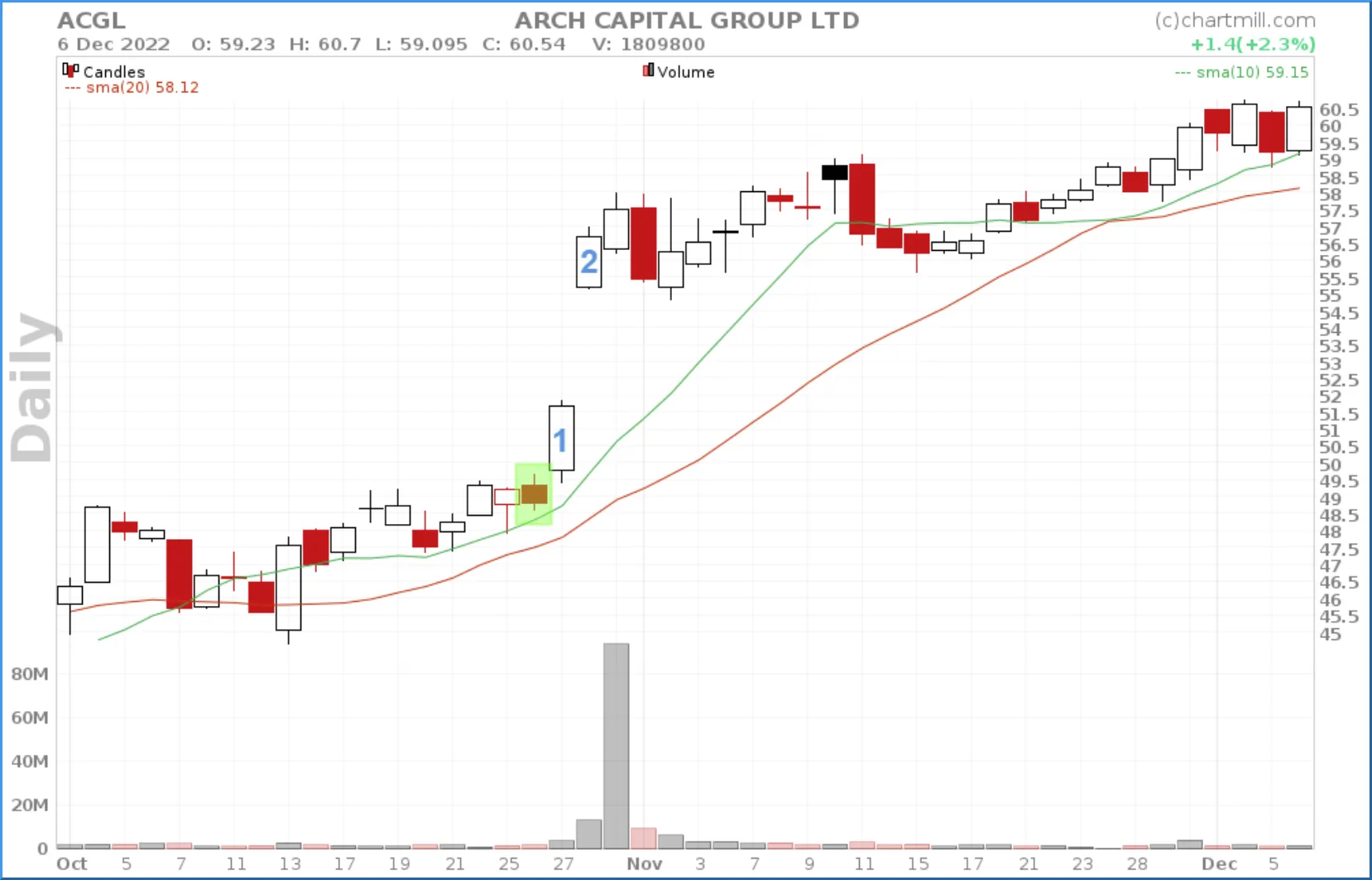
The candle in green is the trading day on which after-hours Q3 results were announced. The next trading day (1) opens with a gap up and the price closes almost 6% higher. But it is only on the date of October 28 (2) that the effect of the earnings surprise really kicks in. The price opens much higher and the close is up 10% from the previous trading day. So as an investor, it is important to always be well aware of when the next company results are announced. After all, the price reaction can be fierce, both positive but - in the case of a negative earnings surprise - certainly also negative.
This example also shows that analyst forecasts are not perfect and you cannot or should not blindly rely on them.
Earnings surprises screen filters in ChartMill
Because earnings surprises are also important for a company's future valuations, ChartMill offers several options to specifically screen for positive earnings surprises.
You will find these on the 'FA (Cont.)' tab where you have a choice of an EPS surprise filter applied over the last 2 or last 4 published quarterly results.
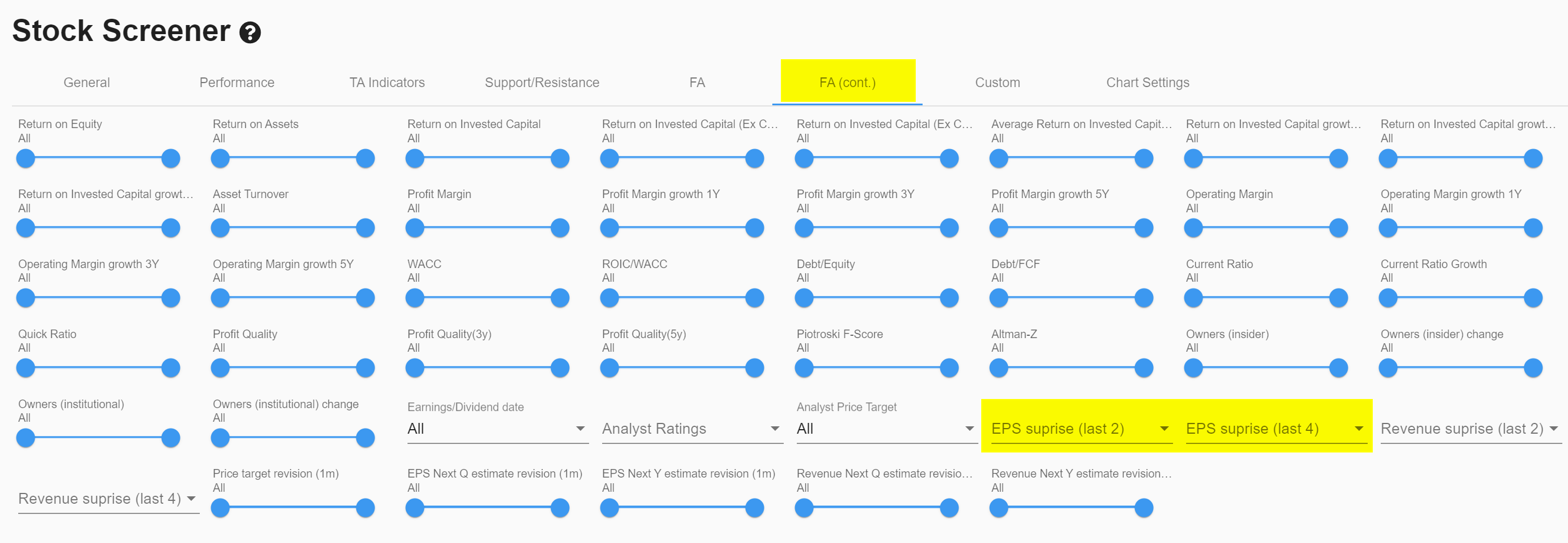
Announcement of next earnings
As an investor, it is important to take into account the dates on which a company announces its quarterly or annual results. This is of particular importance for companies whose stocks you have in your portfolio because the announcement can have a major impact on the price evolution, positive or negative. To protect your accumulated profits, you can sell (part of) the shares just before the news is announced.
In ChartMill, you can find out from the company's profile page when the next quarterly results will be announced.
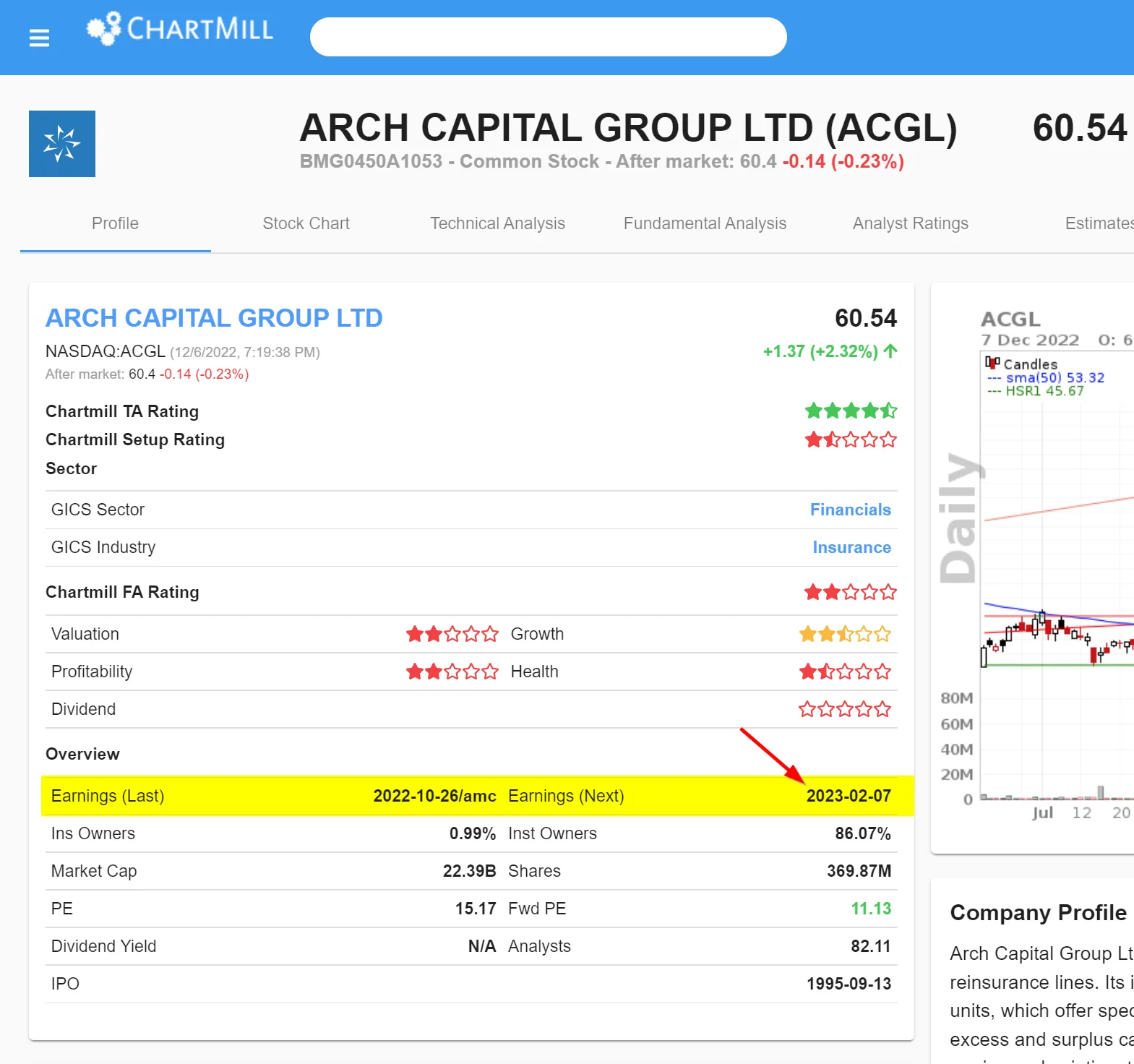
You can also use the screener to look for stocks that will publish their results within a certain period (today, tomorrow, next week, next month,...) or that have recently published their results.
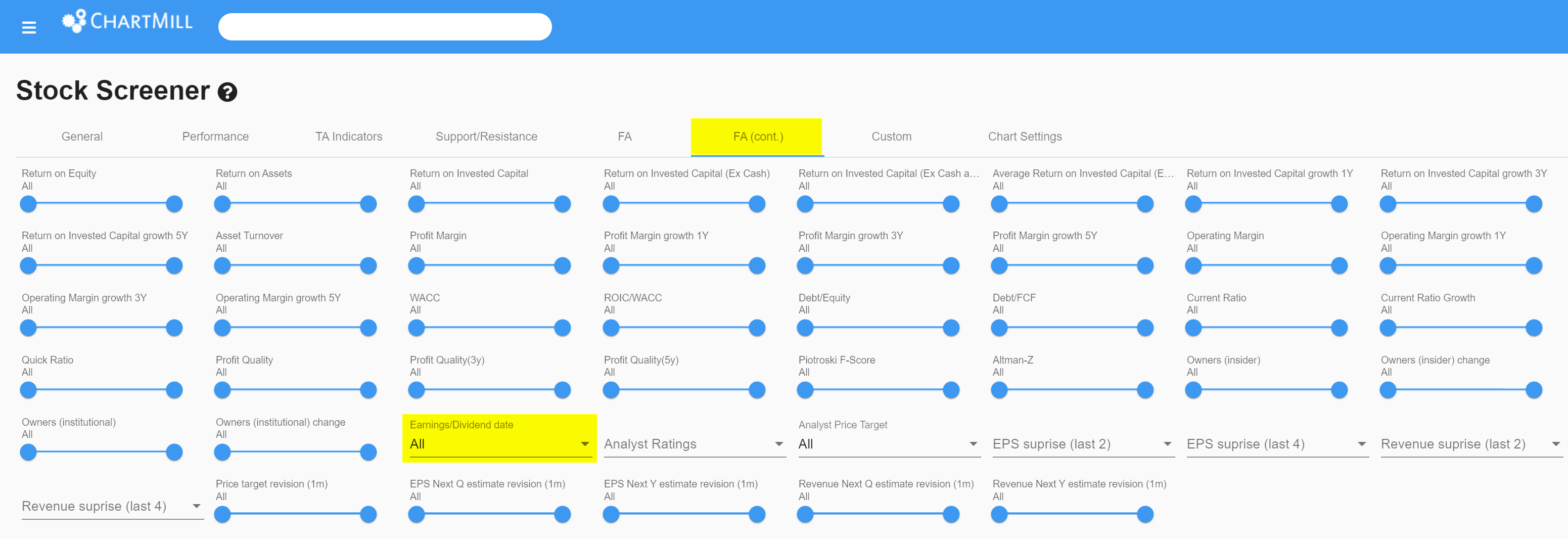
Earnings Surprise and Revenue Surprise: important consideration.
The screener also allows filtering based on revenue surprise. This is particularly interesting when combined with the EPS surprise filter. The revenue surprise filter provides insight into whether rising earnings are a result of reducing expenses or rather due to a change on the revenue side.

This research, among others, shows that when earnings surprises are accompanied by similar revenue surprises in the same direction, they provide a greater degree of reliability that earnings surprises alone.
The reason is that when profit surprises occur together with revenue surprises, those profits can be attributed to revenue growth rather than expense cuts.
While it is true that reducing expenses leads to an increase in net margin and thus more profit, the cost components through which this happens are less homogeneous than when the higher profit margin is a result of a significant increase in revenue. Indeed, certain costs may be one-time in nature, making the profit surprise somewhat wrong and not very structural.
Moreover, a revenue figure is more difficult to manipulate than the profit figure.
As an investor it is therefore worthwhile to check whether the profit surprise is accompanied by a revenue surprise of similar magnitude.
